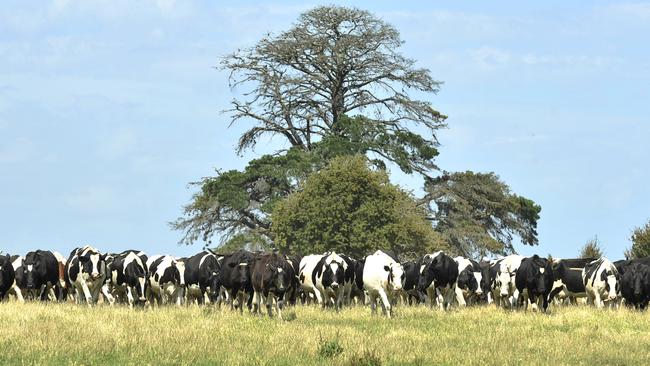Dairy farmers quit levy poll committee: right to vote for cuts denied
Dairy farmers will not be given the right to vote for a lower rate of mandatory levies paid on milk, sparking committee members to quit.

NSW and Queensland delegates have quit the Dairy Levy Poll Advisory Committee, after a majority of its members refused to give farmers the right to vote for a reduction in the $32 million they pay their national research, development and marketing body each year.
NSW dairy farmer Heath Cook and his Queensland counterpart Matthew Trace said they resigned after the committee decided to only offer farmers the options of voting to maintain or increase the current 2.8683 cents a kilogram levy on butterfat and 6.9914c/kg protein they pay to Dairy Australia.
“I don’t believe the voices of dairy farmers who underpin the levy are being heard,” Mr Cook said.
Mr Trace said he felt “obligated to resign after the committee failed to meet its terms of reference”, which states the voting options must accurately reflect the views of levy payers.
“Take a look at the wool industry, they’re running a levy poll that gives growers choice,” Mr Trace said.
Woolpoll 2021 gives growers options to vote for levy rates ranging from zero to 1 per cent, the status quo of 1.5 per cent or rises of 2 per cent and 2.5 per cent.
But for dairy farmers it’s been almost 10 years since they got to vote on their levy rates, when in 2012 they were only offered the option of zero levies, the status quo or an increase.
Federal Parliamentary records show a staggering 39 per cent voted for the zero option.
Committee chair Ron Storey would not discuss the levy options, but confirmed the committee reached a decision last week and that its report was being written up to go to Dairy Australia and Agriculture Minister David Littleproud’s office this week.
He said the government had about two weeks to consider the committee’s recommendation before announcing farmers voting options.
The Weekly Times asked the Minister if he believed dairy farmers should be given the right to vote for both a decrease and increases in the DA levy, as was being offered under the current Woolpoll 2021?
“There is a process available for the dairy industry to change aspects of the levy,” Mr Littleproud said.
“If the dairy industry want to change the levy poll to include specific voting options, the government will consider a proposal put forward.”
The current levy rates mean a one million litre dairy farm, producing 78,000kgs of solids is paying about $3600 to $3700 a year to fund DA.
Yet despite a slump in national milk production and farmers’ ongoing battle to offset rising costs, DA is increasing its reserves, which rose from $26.4m in 2019 to $27m last year.


